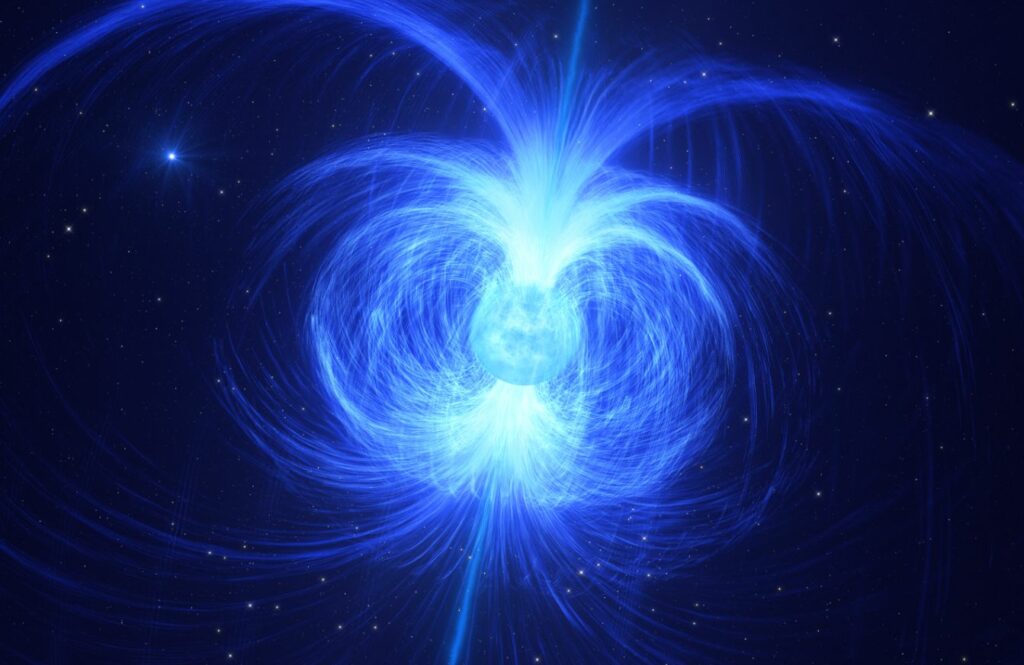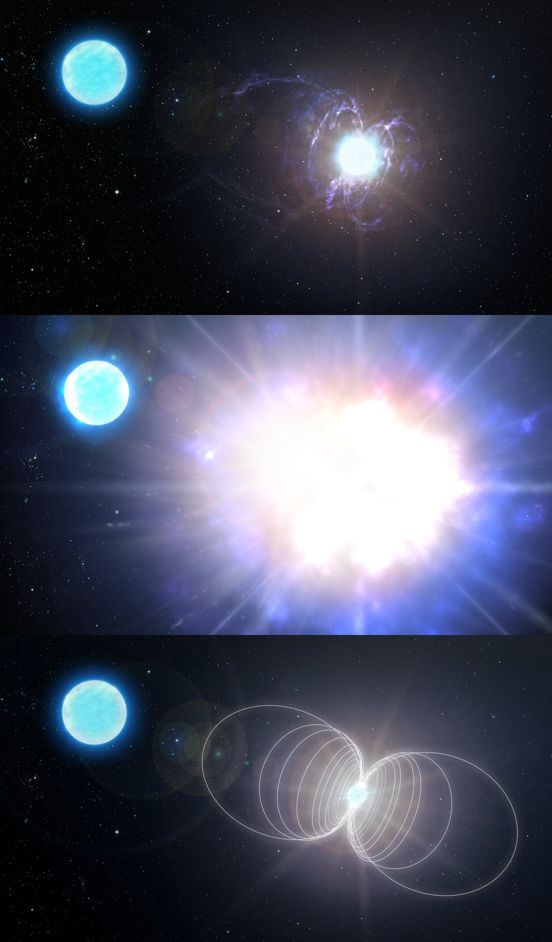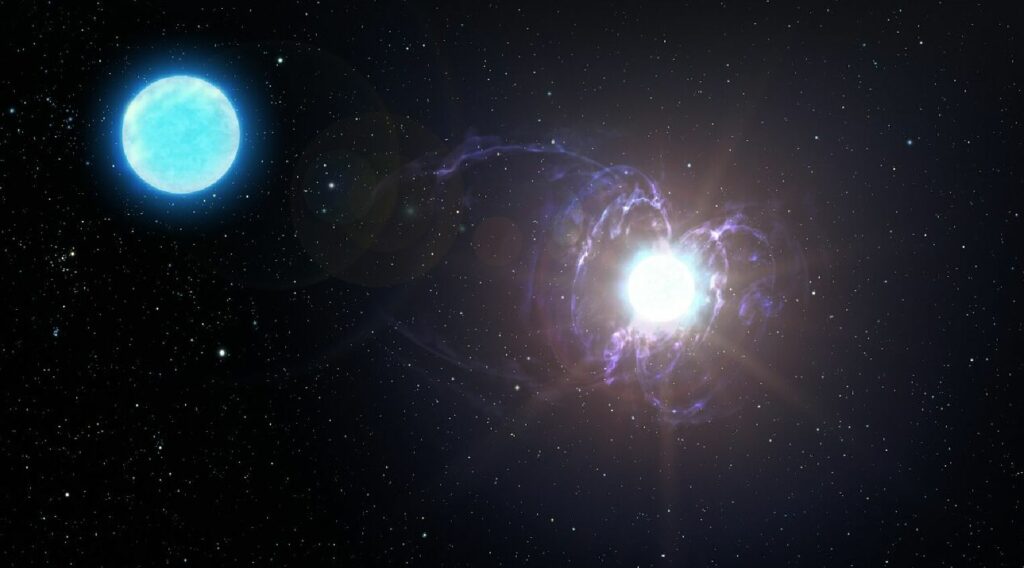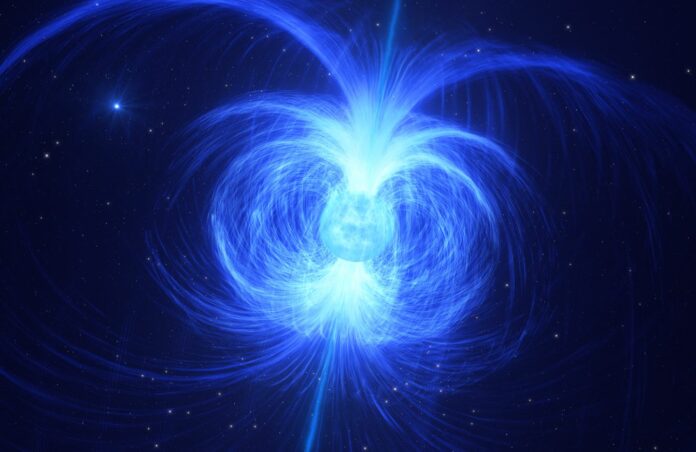A Eureka Moment: New findings reveal an unusual variant of Wolf-Rayet star that “Will End Its Life As A Magnetar.”
Compact remnants of massive stars that have undergone supernova explosions, neutron stars are the densest entities in the cosmos. Among these neutron stars, magnetars stand out for having the most potent magnetic fields observed on any cosmic body.
The formation and generation of these extraordinary fields in magnetars, which span merely 15 kilometers in diameter, continue to puzzle scientists.
A recent discovery led by a group of astronomers, with contributions from André-Nicolas Chené of NSF’s NOIRLab, could provide vital clues about the genesis of these magnetic behemoths. Using an array of global telescopes, inclusive of the Canada-France-Hawai‘i Telescope situated on Maunakea, they pinpointed an unfamiliar celestial object: a massive helium star((an unusual variant of a Wolf-Rayet star) with magnetic properties, which could be a magnetar’s predecessor.
Chené commented, “For the first time, a strong magnetic field was discovered in a massive helium star. Our study suggests that this helium star will end its life as a magnetar.”

Interestingly, despite being observed for over a hundred years, the true characteristics of this star, HD 45166, were not fully understood. It was known that the star was helium-rich, slightly more massive than the Sun, and part of a two-star system.
The peculiar traits of HD 45166 captured the attention of Tomer Shenar, an astronomer from the University of Amsterdam.
“This star became a bit of an obsession of mine,” said Shenar, the main author of the paper published in the Science journal. His prior experience with helium-abundant stars led him to hypothesize that magnetic fields might account for HD 45166’s unusual features.
“I remember having a Eureka moment while reading the literature: ‘What if the star is magnetic?’,” he recalled.
Shenar, Chené, and their team pursued this theory, utilizing the CFHT to conduct new spectroscopic analyses of the star. Their findings confirmed a staggeringly strong magnetic field in the star, approximately 43,000 gauss, marking the highest magnetic strength detected in such a star. Additionally, by examining the star’s interaction with its partner, they ascertained its mass and age more accurately.

The team hypothesizes that this star originated from the fusion of two medium-sized stars, differing from the usual evolution from red supergiants.
Chené pondered, “This is a very specific scenario, and it raises the question of how many magnetars come from similar systems and how many come from other types of systems”

Located 3000 light-years away in the Monoceros constellation, HD 45166 will experience a luminous, though not overly powerful, supernova explosion in a few million years. This event will cause its core to shrink, intensifying its already impressive magnetic field. The aftermath will be the birth of a neutron star possessing a magnetic field approximating 100 trillion gauss, the universe’s most formidable magnet.
Chené reflected, “We thought that the most likely magnetar candidates would come from the most massive of stars.
“What this research shows us is that stars that are much less massive can still become a magnetar, if the conditions are just right.”
Source: 10.1126/science.ade3293
Image Credit: ESO
